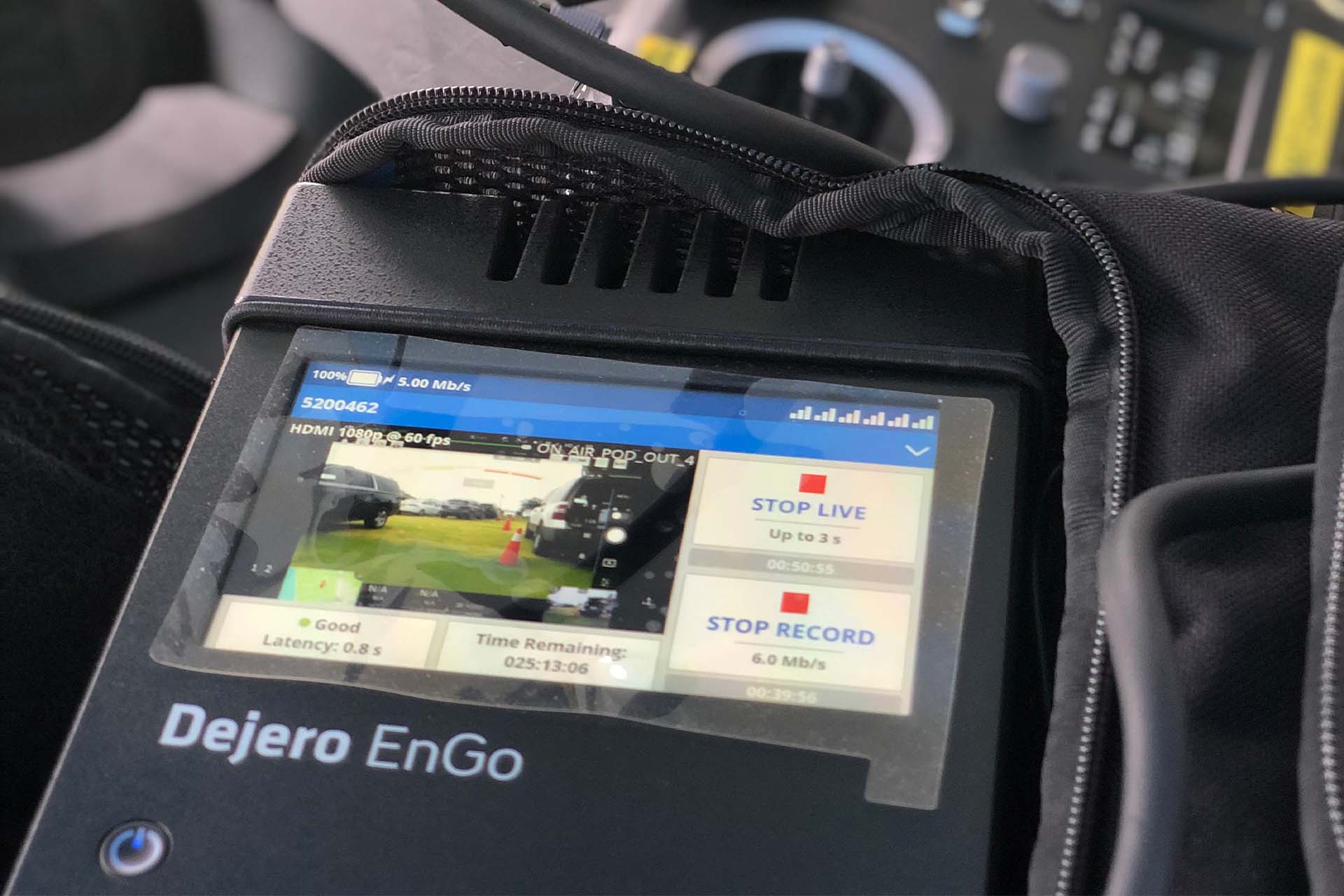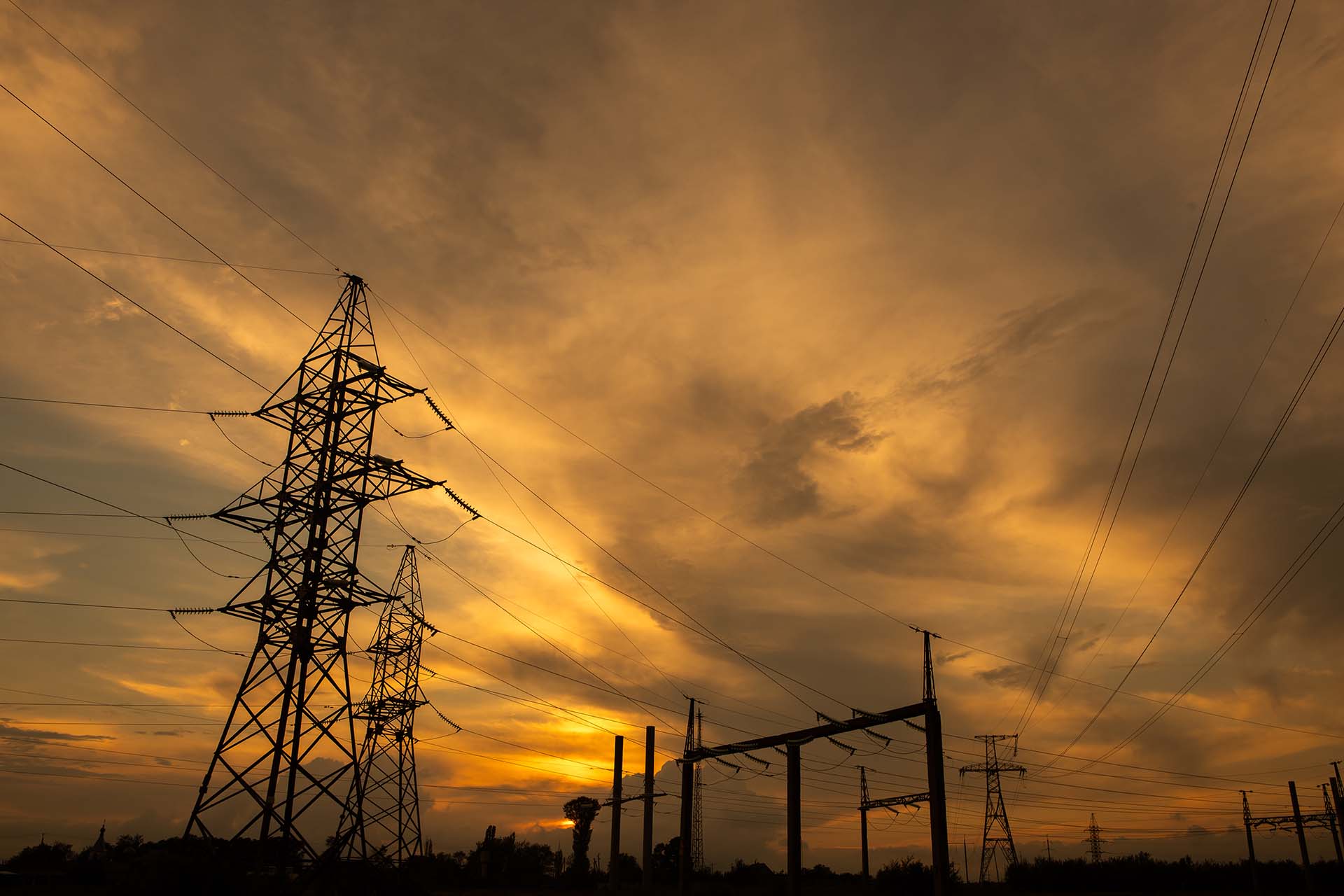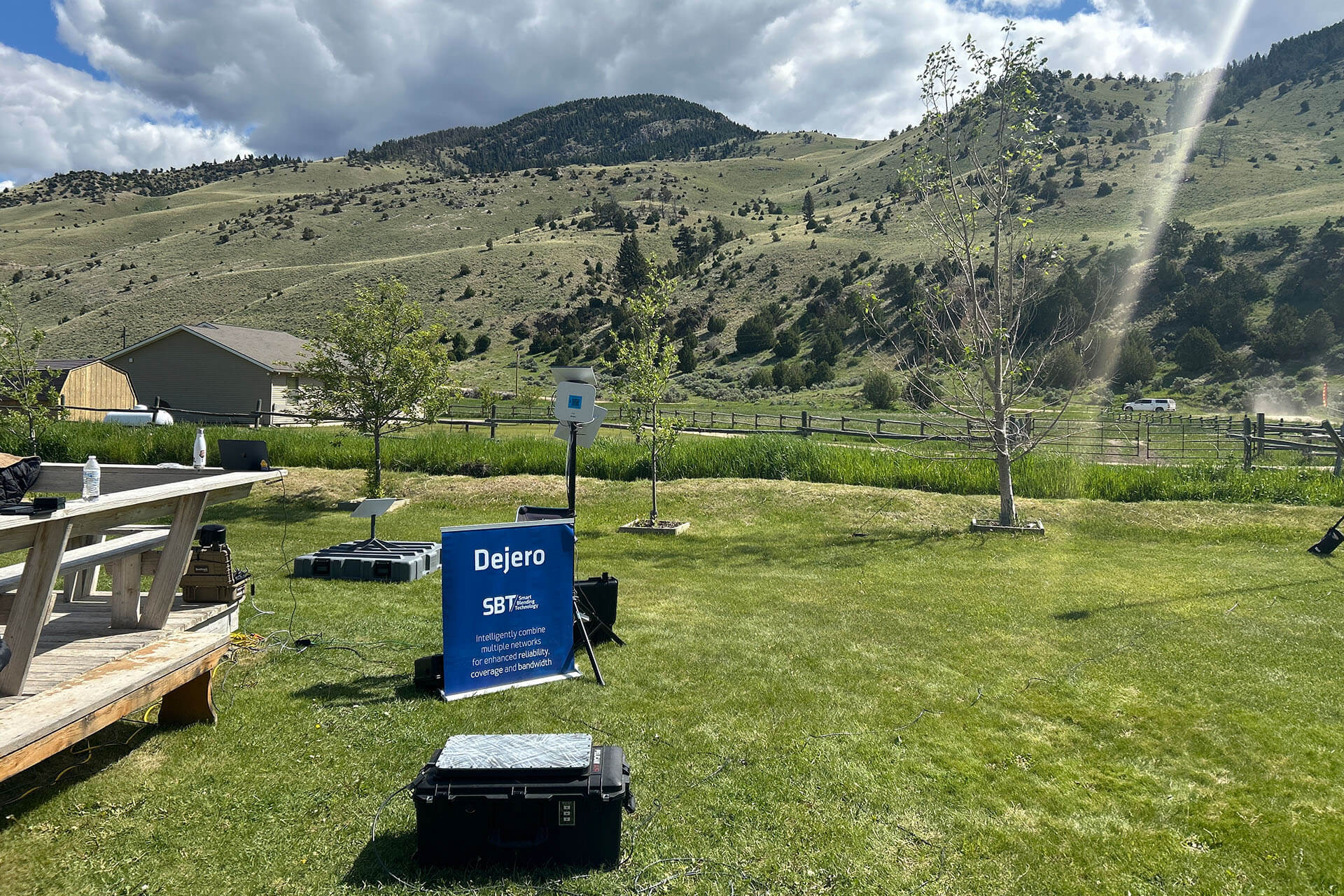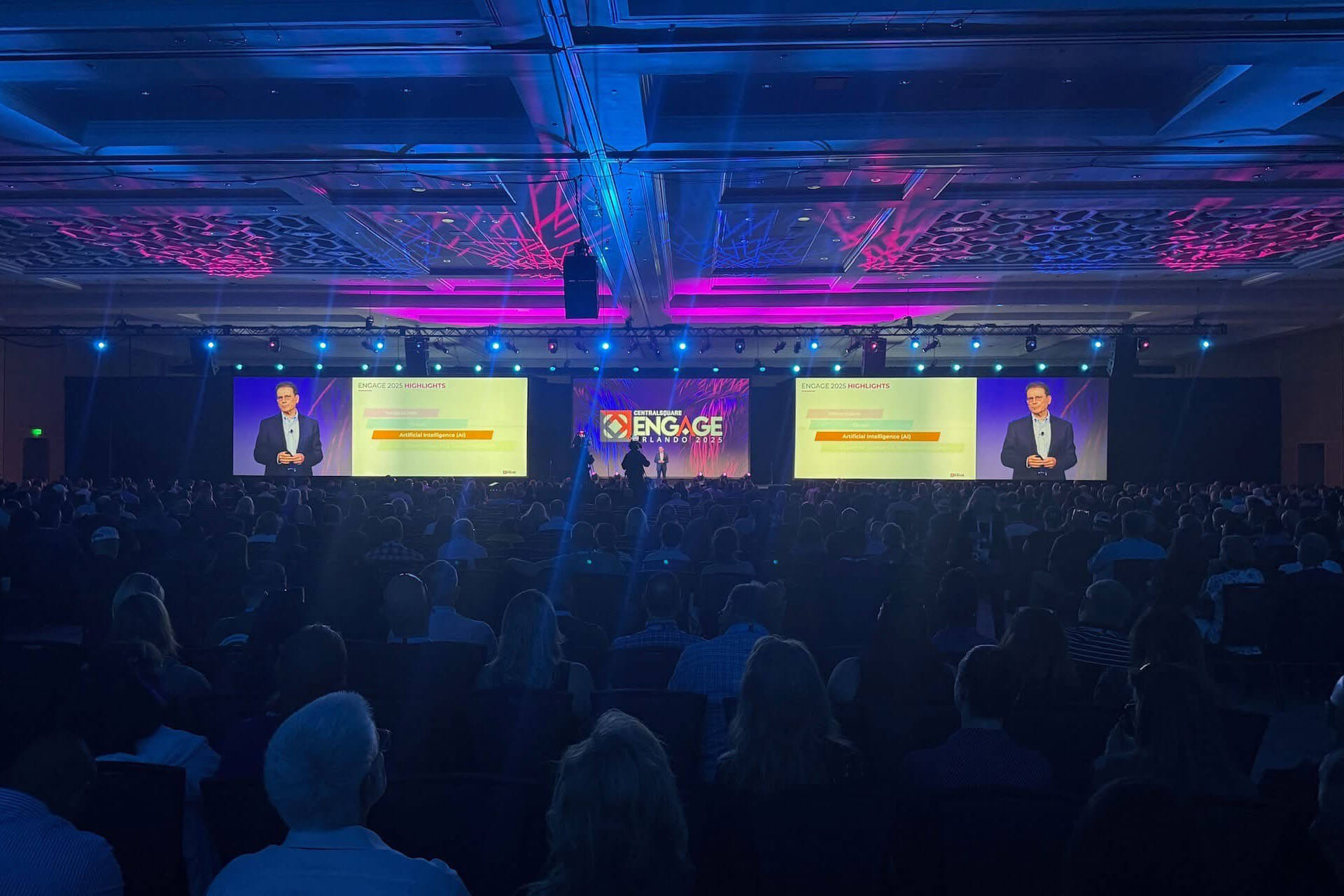The next network outage could happen anytime. It’s a reality, regardless of which carrier you rely on. Outages can have significant consequences on communication systems, people’s livelihoods, businesses, airports, banks and even more worryingly, 911 and emergency response.
In today’s interconnected society, network and internet access is critical infrastructure. From AI and IoT, to AR/VR and Big Data, access to cloud services and corporate data centers via the internet is vital for organizations embracing digital transformation.
Recently, a significant network outage left customers unable to place calls, send texts, or access the internet for around 11 hours. 911 centers even reported that the network’s customers couldn’t reach the emergency line because of the outage, suggesting they use a landline or find another carrier service to dial 911 instead.
Reasons for outages can vary, from faulty software updates, human error, and cyber security attacks, to construction-related digging that accidentally damages fiber cables, and severe weather, such as storms and heavy snow.
Outages are inevitable. So why wait to fail?
One connection is never enough
Relying on a single connection for critical communications leaves communities, businesses and emergency response teams vulnerable. At peak usage times like news events or public safety incidents, a further strain is put on network towers causing congestion and potentially leading to service disruption. Network outages are next level.
Enter Dejero Smart Blending Technology™. It aggregates multiple wired (broadband/fiber) and wireless (3G/4G/5G, satellite) IP connections into a single service for uninterrupted, mission-critical connectivity.
It offers the capability to tap into more than one provider of network services simultaneously. While each connection path has its own characteristics, Dejero Smart Blending Technology dynamically and intelligently manages the fluctuating bandwidth, packet loss, and latency differences of individual connections in real-time, seamlessly redirecting packets and maintaining session persistence if connections degrade or are lost.
By spreading your data across multiple networks and towers, this diversification ensures you have the bandwidth you need, even when individual networks are overloaded.
Why failover isn't fail-proof
Many connectivity solutions depend on failover technology, which automatically switches to a backup network if the primary connection fails. While this may seem like an adequate safeguard, it has limitations.
First, failover can take several seconds to activate, leading to disruptive downtime during the transition. This delay can be critical in situations where real-time data transmission is crucial, such as live news broadcasts or emergency response operations. Telemetry data, security cameras, dash cams or body cam feeds could be dropped at the most critical time. From a business perspective, you may be forced to restart your VPN or re-dial for VoIP, wasting valuable time that hinders your workflow and potentially causes financial loss
Second, failover only utilizes the bandwidth of the backup network, limiting the overall available data transfer capacity. This can be problematic for applications requiring high bandwidth, like video streaming or large file transfers.
Blending not switching
Dejero takes a different approach with its Smart Blending Technology. Instead of relying solely on one network or waiting for a failover to kick in, Dejero simultaneously aggregates bandwidth from multiple networks, including cellular, satellite, and Wi-Fi. This provides several key advantages:
- It seamlessly blends the available connections, ensuring a continuous and uninterrupted data stream even if one network experiences an outage
- By combining multiple networks, it significantly enhances the total available bandwidth, allowing for smoother and more reliable transmission even for bandwidth-intensive applications
- Its intelligent algorithms prioritize the strongest and most reliable connections, minimizing latency and ensuring real-time data transmission.
The impact on our customers... there's none
If, during peak usage, a network experiences a temporary outage, Dejero's Smart Blending Technology uses other available networks to compensate for the drop, ensuring the connection continues uninterrupted. The customer experiences no disruption, and the video or data stream is transmitted without any interference.
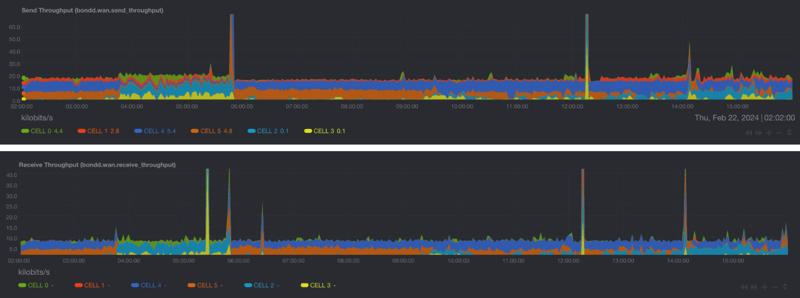
Diagram: This diagram shows what happens with Dejero Smart Blending Technology when an outage occurs. The majority of traffic is being carried by CELL 4 and CELL 5. At around 3:30 am CELL 4 and CELL 5 experience an outage so CELL 0, 2 and 3 aggregate to immediately make up the difference ensuring that bandwidth is maintained. This shows that three diverse network carriers were required at that specific time to compensate for the shortfall. Just before 6 am, service to the original carriers, CELL 4 and 5, return and resume normal operation.
Our records show that during the recent nationwide outage in the US, Dejero didn't receive any additional support calls. Our customers were unaffected as our Smart Blending Technology maintained connectivity even when some networks failed.
Transforming emergency services
Downtime—or any compromised connectivity—is not an option for emergency services. Helping local governments stay up to date with the latest and best available technology allows public safety agencies like Cal OES (California Governor’s Office of Emergency Services) to better support emergency responders and ultimately save lives.
To equip PSAPs (Public Safety Answering Points) with reliable connectivity, they deployed over 200 Dejero GateWay M6E6F network aggregation devices on sites across California in 2021. These devices are easily integrated with existing facility IT infrastructure and connect with the Dejero GateWay Service to route data to its destination. The result is the delivery of resilient backup connectivity, which provides Cal OES with the peace of mind that it will never go offline.
By implementing Dejero technology into their PSAPs, Cal OES accelerated the transition to their Next Generation 911 (NG-911) system. With resilient connectivity for their critical communications established, they have peace of mind that PSAP operations will continue to operate without interruption, even if primary and secondary connectivity paths are disrupted.
It’s time to stop worrying about network outages disrupting your critical operations.
Don't wait for failure; be prepared with Dejero's uninterrupted connectivity to ensure you are ‘always on’, no matter what the network throws or doesn’t throw your way.


